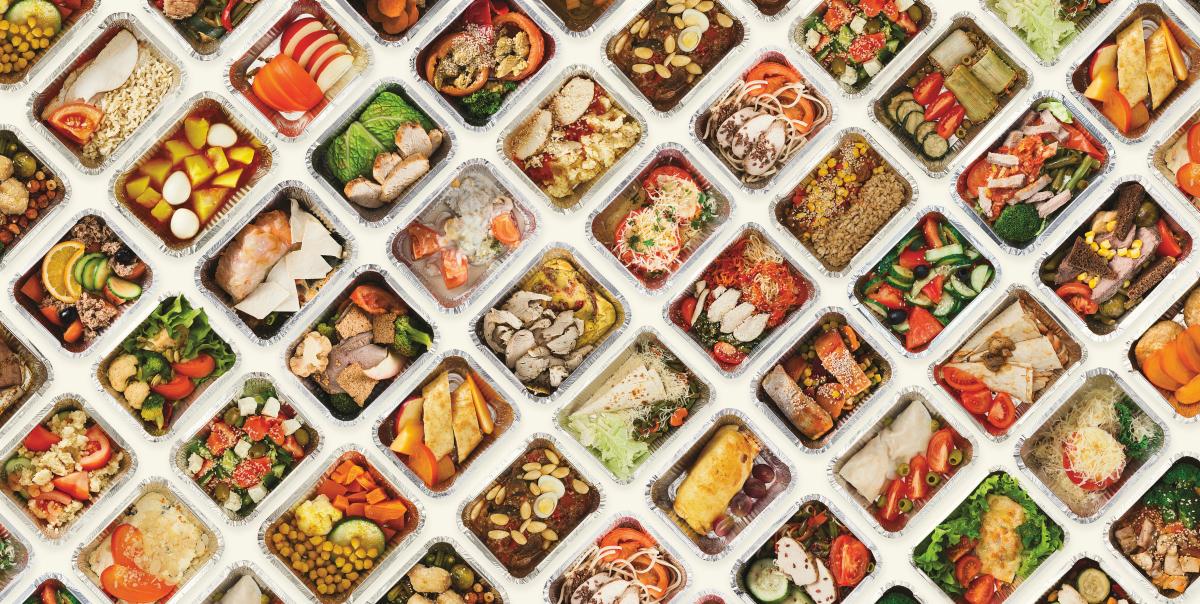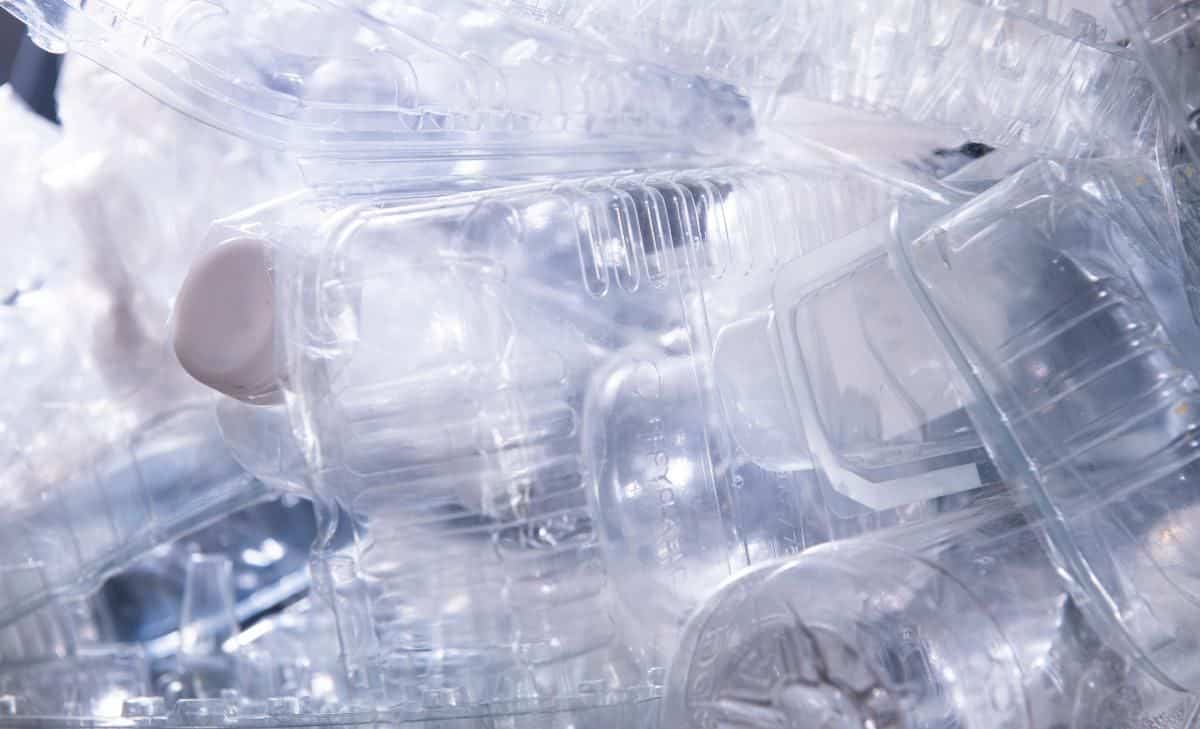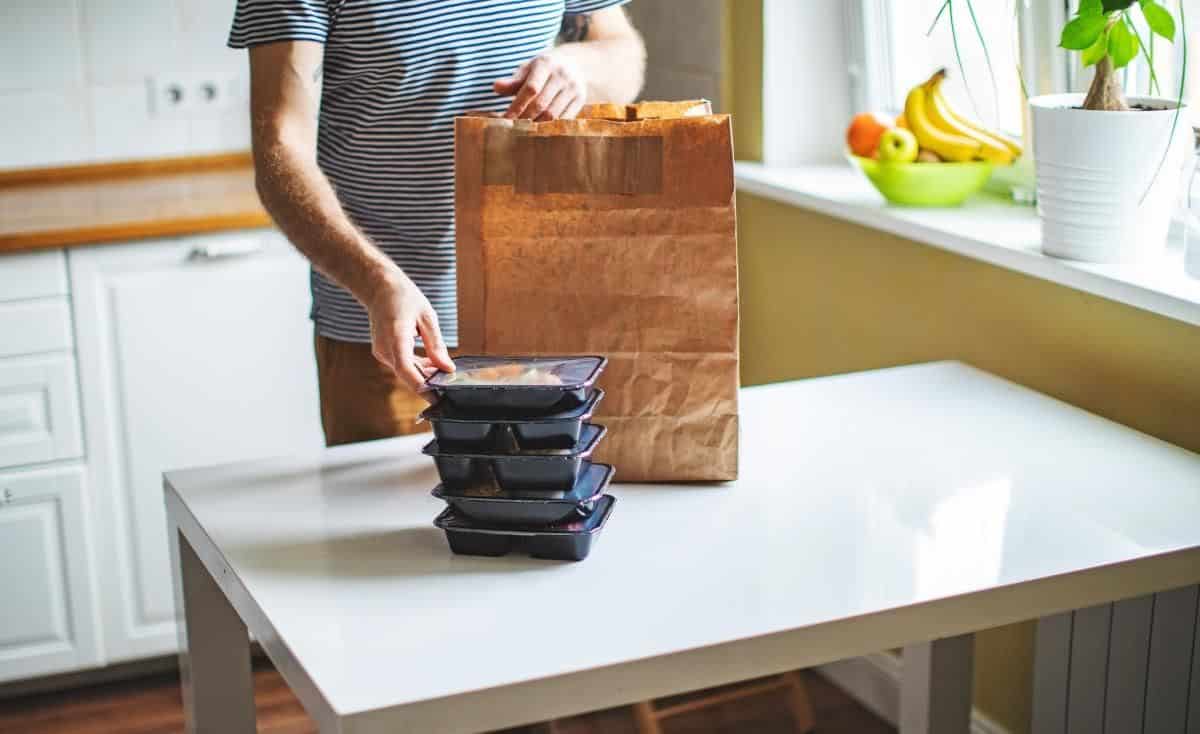

The boom in the meal kit industry has never been more apparent than in the last 12 months. Meal delivery services are helping even the least talented cooks enjoy fresh, home-cooked meals and more and more companies are recognizing the value of this sector. The adoption rate of this fairly new industry has led to estimates of $5 billion in growth over the next decade. It’s also clear this in an industry with promise as big names, including Amazon, want in on the game. But while meal kits have come into their own since the outbreak of COVID-19, are they a positive step forward for the environment?
The meal kit industry is currently worth over $1.5bn and this is definitely set to increase, but can you consciously purchase these goods if you’re committed to a sustainable lifestyle? Many of the meal kit and recipe box companies push the idea that you’ll waste less food, as you’re getting exactly what you need for the right sized portions all in the box. But what about the packaging? Is the balance of minimizing food waste equal to the additional packaging? Different sides would have you believe different things, so we’re considering the case in depth, looking at the ecological impact of these kits and whether the good factors outweigh the bad.
Many food service providers have added value to their business or expanded it in this new direction, with great results. Others have taken advantage of the restrictions of the coronavirus pandemic to reposition their business and deliver the same restaurant-quality food to people’s doors. Some companies have green ethics at the core of their business, so you may find their meal boxes are naturally eco-friendly whereas others may have a way to go to reach this stage. Therefore, it is important to consider your choice of meal kit as well as whether the industry as a whole is the right choice environmentally.
Why Have Meal Kits Become So Popular?
Meal kits provide a solution to multiple problems. People order fast-food or takeout and then feel guilty and worry about the excess calories. Others cook at home but are disappointed by their efforts to create quality meals, or aren’t sure they have all of the ingredients they need.
Meal kits can be a solution for both these problems, and this has driven their popularity. They often provide a healthier alternative to fast food, come pre-portioned so there’s no risk of overeating, and many providers of the kits or recipe boxes consult recognizable names in the food industry to produce their range of options. Meal kits also provide an easy solution to the “what’s for dinner?” question and allow you to spend less time grocery shopping and meal-prepping. With all these benefits, however, not everyone is sold. A primary concern is the question of their environmental impact.
Analyzing America’s Waste

Lucy Lambriex / Getty Images
Waste in the U.S. is a huge problem. Here we can split it into two categories to help look at how meal kits contribute to the waste problem. America generated 42 million metric tons of plastic in 2016 alone. Packaging makes up a huge proportion of plastic waste and statistics from the Environmental Protection Agency show that around 75.4% of all plastics end up in landfills, the worst possible outcome.
When it comes to food waste, the picture isn’t much prettier. Food waste is estimated to be as much as 40% of the whole food supply according to research from USDA’s Economic Research Service. Wasted food is considered the single largest category of material in all municipal landfills and much of this food could be used to help the millions in food poverty. Reducing food waste has become a focus and commitment of the government, as the USDA, EPA and the US Food and Drug Administration (FDA) signed a joint formal agreement to look to improve coordination and communication between federal agencies who could minimize food waste. They are also committed to better educating Americans, so they understand the impact of every ingredient thrown in the trash.
Meal kits may not be the whole solution to either of these problems, but finding out their impact on both of these areas could help decide whether they’re the right choice for you and your family.
Do Meal Kits Contribute to the Packaging Problem?
Some of the first complaints about meal kits were around the packaging. There has been research carried out to analyze the packaging of meal kits. Many meal kits include a cardboard box for storage but also packaging to preserve all the ingredients, individual packing for different ingredients, linen materials, ice packs, recipe cards and more.
The Association for Plastic Recyclers found “each had more than two dozen different packages, including one with 31 different pieces of packaging.” Much of the packaging was also found to be plastic and many weren’t recyclable. Another cause for concern with many meal kits is the ice packs they are delivered with. These are almost always non-recyclable because they contain chemicals which need to be disposed of safely and cannot be reused.
The issue of adding more non-recyclable plastics into the ecosystem is not something any meal kit company would want to take responsibility for. While many may not have found a solution to the problem yet, others have already made steps to show they are committed to a greener approach to their packaging and their business as a whole.
Blue Apron, one of the biggest names in meal kits, says that around 85% of their packaging is recyclable by weight. This includes any rigid plastics, glass bottles, metal cans, molded fiber, cardboard boxes, and the plastic bags for their drain-safe ice packs. They’ve also partnered with How2Recycle to implement their labels on all packaging. Martha and Marley Spoon, a European brand teamed up with Martha Stewart, offers highly-effective recycling program to ensure boxes are properly disposed of. This shows that brands who want to make their products sustainable and eco-friendly can do so.
There are other eco-friendly boxes which ensure all their packaging is fully recyclable or even compostable in some cases.
Could Meal Kits Solve the Food Waste Problem?

yulkapopkova / Getty Images
Believers in the meal kit idea and the companies themselves regularly tell us they could play a key role in solving the huge food waste problem. Having looked at the figures, it’s clear action is needed and the average American needs to find a way to minimize the roughly 30% of food thrown in the trash.
Convinced of meal kits’ role in tackling food waste, research published in the journal Resources, Conservation and Recycling argues that average meals sourced from a store are responsible for 33% more greenhouse gas emission than the equivalent meal from a meal kit service.
The research suggests that the environmental benefits of meal kits can somewhat balance out the excessive packaging in some cases. It also found that meal kits can have a significant impact on food waste reduction because ingredients and portions are precisely measured.
The researchers selected five different Blue Apron meals (not in a sponsored or funding arrangement with the company) and used data about the environmental costs of different food production methods, fuel needs involved in delivery and concluded that most delivery services produced a similar level of emissions. To replicate this experience with grocery food, they visited the store and bought the ingredients to make the recipes from the kits.
The USDA food waste rate estimates were then used to estimate as accurately as possible how much of the leftover food and ingredients would end up thrown in the trash by the average American family. They then analyzed various aspects of the grocery-store meals versus the kit meals comparing factors such as waste, energy usage and requirements, emissions from transportation and selected other factors.
Of the five meals chosen from the meal kit provider, only the cheeseburger kit produced a higher level of greenhouse gas emissions than its grocery store comparison. This is in part due to the weight of the ingredients and also that beef production has a high impact on the environment in almost all situations. It’s in the field of food waste that meal kits really stood out, as they significantly minimize the waste produced by the average person for each meal.
This study found that the environmental impact of meal kits beyond food waste reduction is minimal, but with the extent of the food waste problem, it’s definitely something to consider. As meal kit delivery services continue to improve their packaging and offer more recyclable or compostable options, this could also change for the better.
Lifestyle Changes and Choices to Reduce Waste
Meal kits have their advantages and disadvantages, but they are an effective way of minimizing food waste if you have a busy lifestyle and need quick and easy access to fresh, quality food. Many meal kit companies also offer a selection of vegetarian and vegan options. They often come at a premium price, but are a great way to introduce a plant-based diet.
There are other ways to eat more sustainably with the planet and environment in mind including:
- Eat more plants: Upping the plant content of your diet is not only great for your health, it’s also good for the environment.
- Consider your waste carefully: With meal planning, better organization can help you avoid wasting any food on a weekly basis. Utilizing your freezer properly can also help.
- Minimize meat: We’ve already mentioned the environmental impact of beef production, but this also applies to other meats; if you can consider cutting back, it’ll benefit the environment and potentially your health too.
- Buy the best you can: Always opting for the best-quality meats and animal products means you are considering the quality of life of the animals you eat and the way they are raised. Buying eggs from uncaged hens is a good example of this. Look for certifications like USDA organic on your purchases.
- Celebrate your region: Eating locally and regionally minimizes the carbon footprint and emissions of the food you eat. Align your eating with your local area. Soy beans are the top crop in Illinois for example whereas Maine is the home of dairy and potatoes. Eating regionally, and seasonally, cuts down on emissions in the transport of food products.

Environmentally Friendly Meal Kits
As we’ve already mentioned, there are some meal kit brands who make their commitment to environmentalism a selling point. Meal kits from environmentally-minded brands can offer a better alternative when it comes to both packaging and ingredient sourcing. Sunbasket, for example, only offers 100% organic kits while Green Chef offers certified organic food with paleo and keto options. There are plenty of plant-based and vegan meal kits too where proteins are not derived from animal sources. The sheer range of kits available ensures even the most environmentally-focused diners can find a kit which suits their palate and their eco-friendly commitments.
They’re not a perfect solution, but meal kits can help to tackle the food waste problem. Many people will also be rightly concerned about the food insecurity problem in the country, with the USDA’s latest figures showing as many as 50 million Americans may experience food insecurity as a result of the pandemic. Uncertainty in access to food when so much is wasted should be a concern for everyone, and some meal kit companies have partnered with charities like Feeding America to donate to their cause and support their work in ridding the country of food poverty.
Many diners see the benefits of a meal kit in the perfectly portioned, high quality food that can be delivered at a competitive price. While there is still a lot to improve in terms of packaging, meal kits can definitely help reduce food waste and produce fewer green house gases than store-bought meals overall. With a little research, you can find an environmentally-minded company who offers the kind of food you love.

 233k
233k  41k
41k  Subscribe
Subscribe 